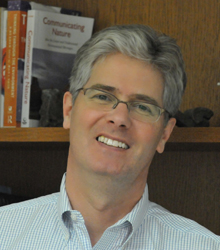Mentor: David Elbert
Mentor's Responsibility for PARADIM: Chief Data Scientist
REU intern: Deidre Grogan

David Elbert is a Research Scientist in the Hopkins Extreme Materials Institute (HEMI) who develops methods and applications to leverage Big Data and AI in materials science. His background leans heavily toward the experimental with experience in high-resolution electron microscopy, synchrotron X-ray methods, and neutron scattering which informs his efforts developing PARADIM’s data streaming and event-triggered infrastructures. In addition to his work with PARADIM, David is the data lead for the new DOD MSEE University Research Alliance; the PI and developer of the MEDE Data Science Cloud; and a co-PI for a new NSF DMREF project using data-centric approaches to revolutionize materials research. Building on his leadership of the 2018 DMR-2D Workshop for Materials Data Science, David co-organized the NSF-DMR Data Summit in 2019 and helped establish the U.S. Materials Research Data Alliance (MaRDA). He serves on MaRDA’s founding governance body, the Materials Research Data Alliance Council.
Project Title:
Building open training stacks for image segmentation of boron carbide experiments
Project Description:
The proposed project will develop and release training datasets for deep-learning instance segmentation of image data from laser-diode floating-zone furnace synthesis of boron carbide.
Research question that defines the REU student's project:
How does training set quality and domain coverage affect supervised learning of image data in materials synthesis?
Project plan/research task to answer the research question:
Label new training set and compare retrained model to current state of the art.
List of tasks to be performed by the REU student and tasks to be performed by the mentor to answer the research questions:
Become familiar with the fundamentals of optical floating zone synthesis, supervised learning models, and the specifics of image annotation. Using the publicly licensed graphical image annotation tool LabelMe, label melt zones and upper portions of crystallized material on 3000 frames. Assist mentor in analysis of model head-node retraining using the new data. Plan and create new imagery from syntheses over expanded furnace conditions to elicit new states.







